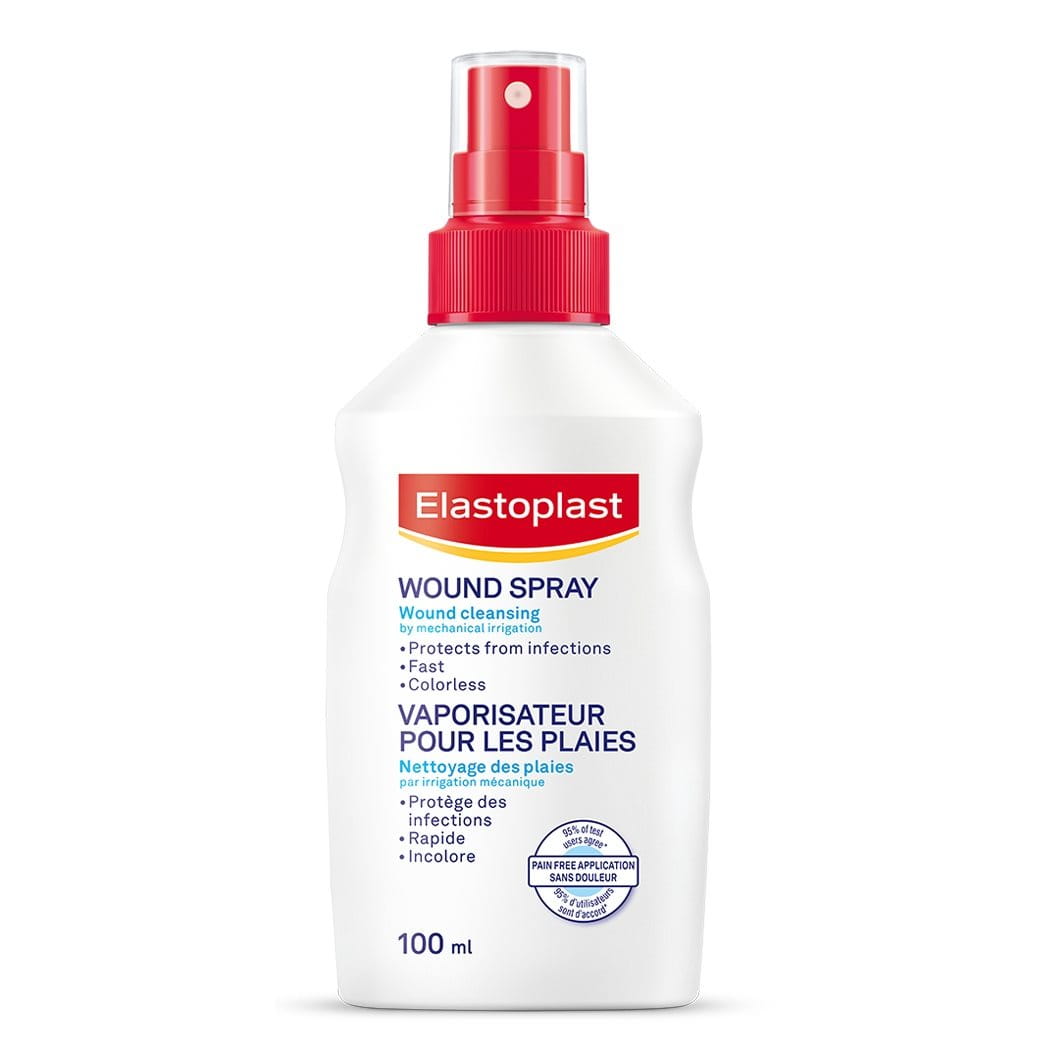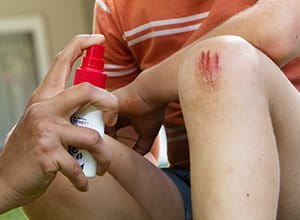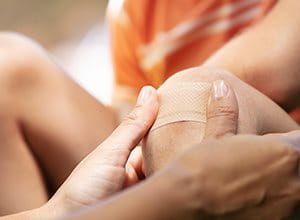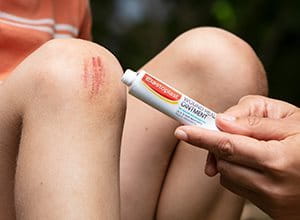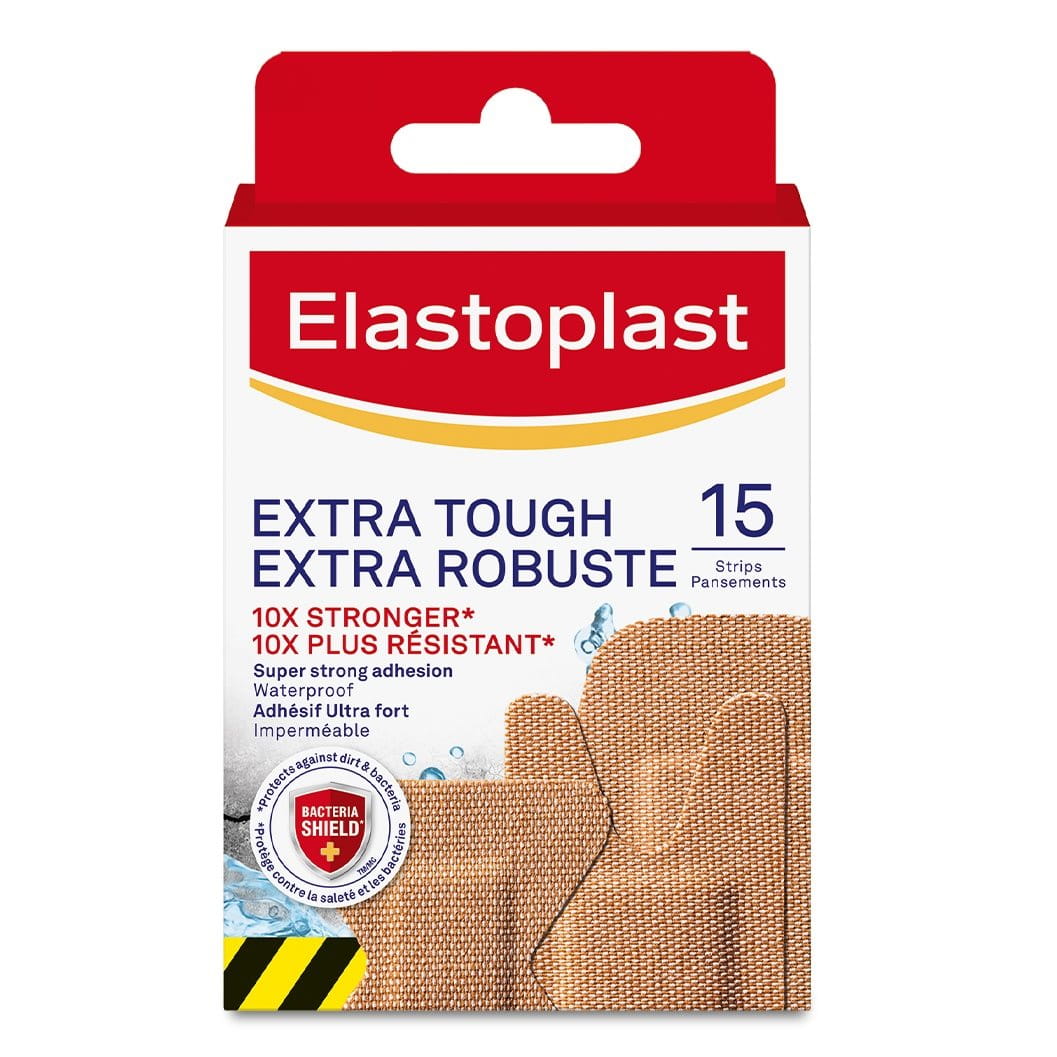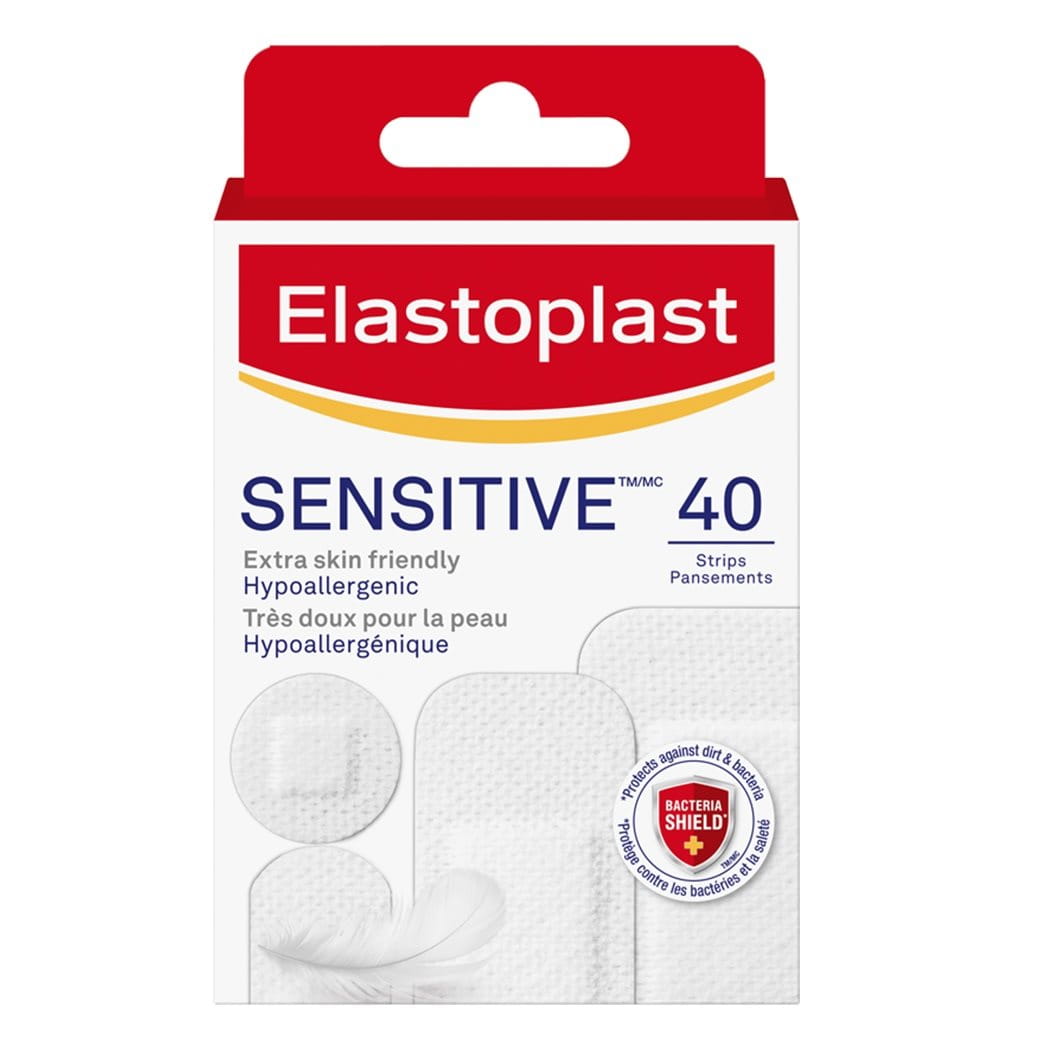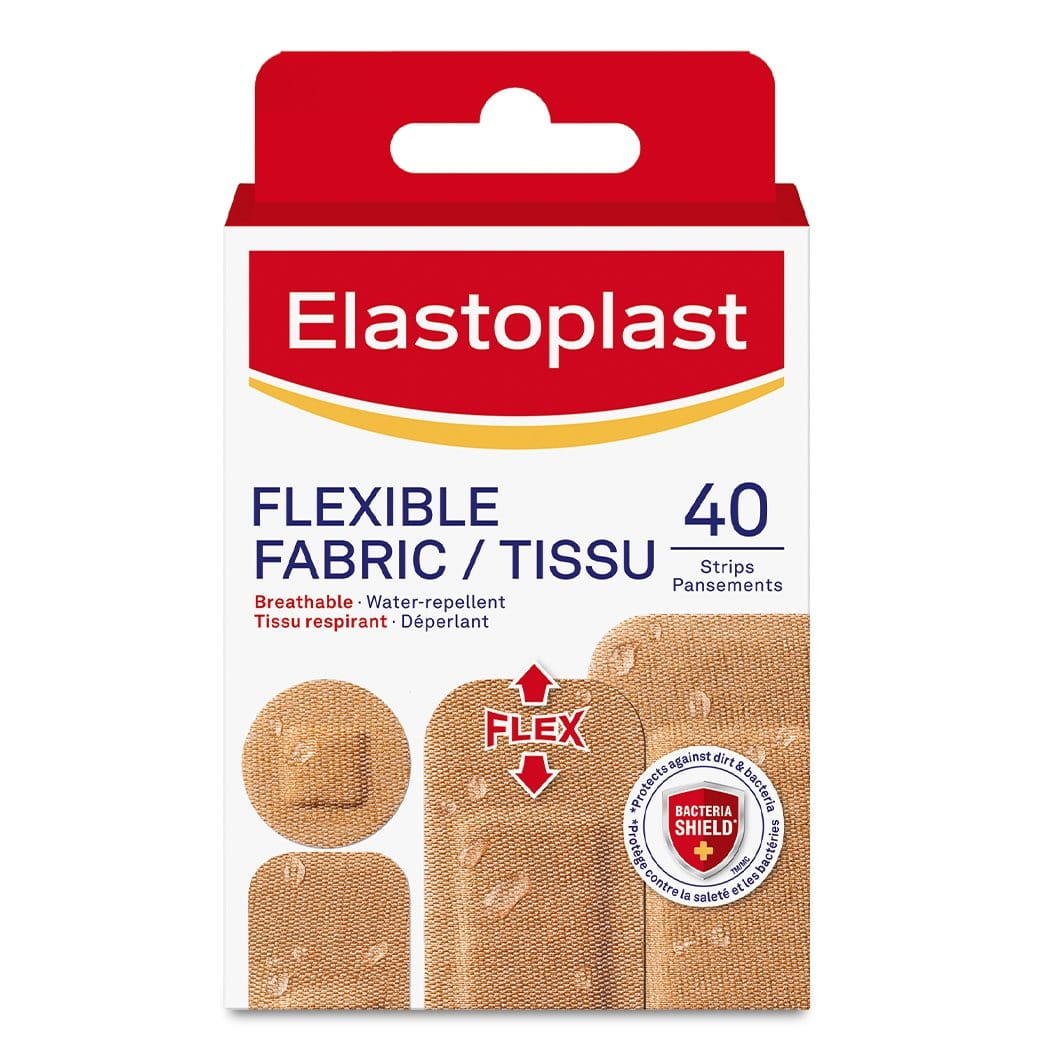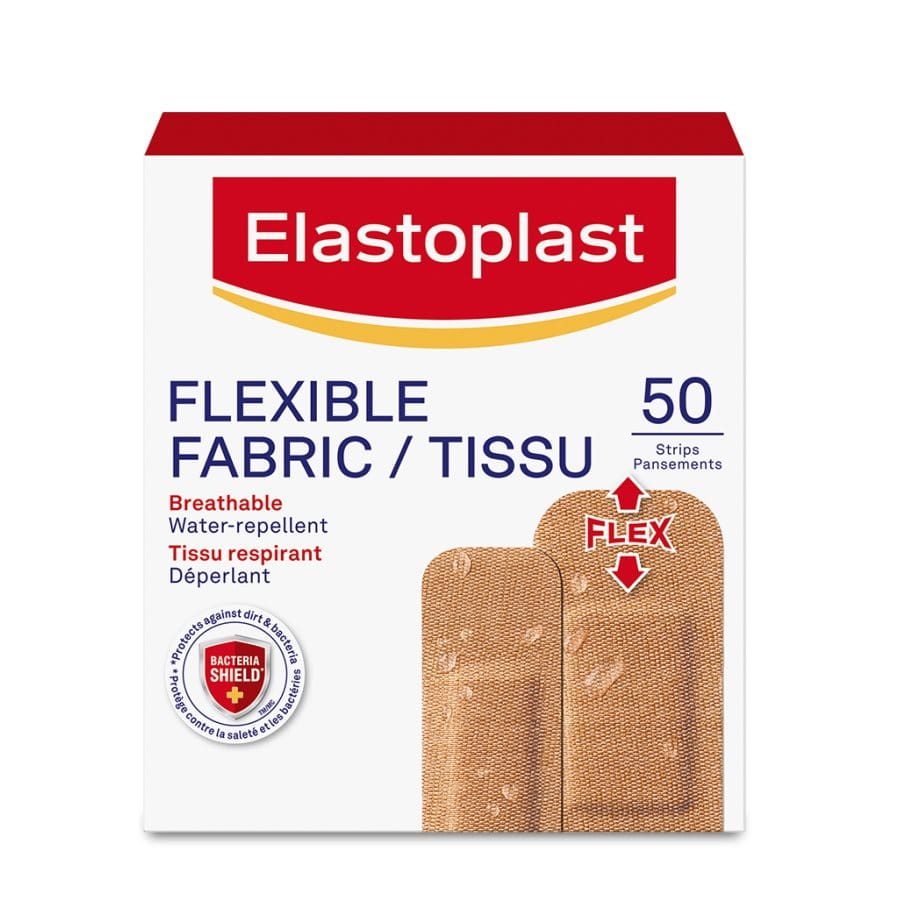Elastoplast Green & Protect™ Bandages - 10 strips to cut to size - 10x6 cm
Product Info
GREEN & PROTECT
Our first step towards conscious protection
Better yet, this versatile dressing length option comes in a 1m x 6cm roll, and can be easily cut to size with a pair of scissors to match any wound or body spot.
*The wound pad and backing are made from naturally derived fibres and are biodegradable. All materials with botanic origin are sourced from FSC® certified forests (Beiersdorf FSC® license number is FSC® N003710).
**The electricity used in the production process is generated from 100% renewable sources. All remaining emissions are compensated through certified afforestation projects.
Our eco-friendly GREEN & PROTECT bandages offer extra strong adhesion, are water repellent and highly durable with a non-stick wound pad that comfortably cushions + protects wounds.
Elastoplast bandages block 99% of bacteria, based on microbial barrier testing.

 *Skin compatibility dermatologically tested.
*Skin compatibility dermatologically tested.

The Afforestation Project
Our GREEN & PROTECT products are 100% climate neutralised via carbon offsetting, through certified afforestation projects. The chosen project is located in the Chinese province of Guizhou and covers a total of 23,700 ha of formerly barren land. The aim of the project is to contribute to climate change mitigation through sequestration of atmospheric CO2 during biomass growth whilst also contributing to local sustainable development, environmental and biodiversity conservation and enhancement of soil quality. All afforestation activities are carried out in collaboration and with full consent of the local village committees and the villagers. The trees planted are predominantly native species such as Masson Pine, China Fir, Cypresses and Pinus Yunnanensis.
How To Use
Packaging Size
Product Content
| Product | Type | Size | Quantity | ||||
|---|---|---|---|---|---|---|---|
| Product: |
GREEN & PROTECT 1 m x 6 cm (Dressing Length) |
Type: |
|
Size: |
10 cm x 6cm |
Quantity: |
10 Pieces |
| Product: |
GREEN & PROTECT 20 Strips (assorted) |
Type: |
|
Size: |
22 x 72 mm 30 x 72 mm |
Quantity: |
14 Strips 6 Strips |
-
1. How often should I change my bandage?
Although Elastoplast bandages are known to stay on strong for quite some time, it is recommended to change dressings daily due to keep things clean. -
2. Is it better to let small wounds dry in the fresh air instead of putting on a bandage?
We'll let you in on a little secret – it's a common myth that keeping minor cuts and scrapes uncovered to let them "air out" helps them heal faster. But in reality, the complete opposite is true. Research shows that covered wounds heal more efficiently and have a reduced risk of infection. Elastoplast products provide protection until the wound is completely healed. Myth busted. -
3. When should I consult a doctor?
We recommend contacting a medical professional under the following circumstances:
- if the wound is deep and causing major bleeding
- if the wound shows signs of infection such as redness, warmth, pain and swelling
- if there are embedded foreign objects in it
- in case of animal or human bites
- if the wound is in the area of the face
- if there is insufficient tetanus vaccination
- and of course always when you have questions or are uncertain.
-
4. What if my wound gets infected and suppurates?
You should contact a medical professional if you recognize signs of infection. This is not only the occurrence of pus but also swelling, redness, heat, pain, itching or burning. In case of infection the wound will need medical care and special medical treatment. -
5. Which Elastoplast bandages are eco-friendly?
Our GREEN & PROTECT range is our first eco-friendly bandage range where we have looked at all components of the product and assessed more sustainable alternatives. Nevertheless, we at Elastoplast are working continuously to improve the performance of our portfolio while minimizing our environmental & climate footprint. And this includes our whole wound care portfolio as the recent and future adaptations of our products are always evaluated to pay into our overall sustainability ambition. This is why, for example, our bandages are produced in our factory with 100% electricity from renewable sources. In addition, since 2021 the products are available in lighter folding boxes that are designed for great recyclability, to save paper and to support a circular economy. The paper or cardboard packaging used is FSC®-certified (Beiersdorf FSC® license number is FSC® N003710) and furthermore we removed the plastic from most of our sealing pouches. We are continuously working to make all our products more sustainable and have ambitious goals to achieve in the future. -
6. Are all components of the GREEN & PROTECT bandages sustainable?
Looking at the key components of our bandages, we identified more sustainable materials for our GREEN & PROTECT range. The backing material is made from a woven fabric, with 100% viscose fibre. The viscose fibre is from botanic origin (wood) and made from renewable resources, it is FSC®-certified (Beiersdorf FSC® license number is FSC® N003710) and biodegradable in fresh water. Our new wound pad is made entirely from naturally derived fibres which are biobased and biodegradable. Additionally, the paper used in our release liner is FSC®-certified (Beiersdorf FSC® license number is FSC® N003710) to maximize sustainable sourcing, while the silicone coating is biomass balanced, meaning the raw materials used in production are produced from bio-methanol made from renewable feedstocks. The adhesive is the only element without sustainability improvements yet, as there is no eco-friendly substitute currently available. We are continuously looking for new alternatives to increase the sustainability level even further without compromising on the performance and safety of our products. -
7. Why do the GREEN & PROTECT bandages come in a brown folding box?
We looked at all components of our GREEN & PROTECT range, incl. the packaging. Our folding box is made from 93% recycled carton which is also recyclable at the end of the product life cycle. The material is left unbleached, which explains the brown color of the box and comes at the lowest weight possible for the material used. -
8. How does climate neutralization through afforestation projects work?
Carbon circulates within a cycle, consisting of the atmosphere, the plant, plant litter and the soil. Deforestation breaks this cycle with a multitude of negative effects. Planting trees is an effective way to reverse these effects and remove carbon from the atmosphere for several decades. Carbon dioxide drawn from the surrounding atmosphere is the main input of any plant’s photosynthesis process. The outputs are water, oxygen and carbohydrates. The latter are built into the plant’s fibre thereby fixing carbon in the plant‘s biomass.
